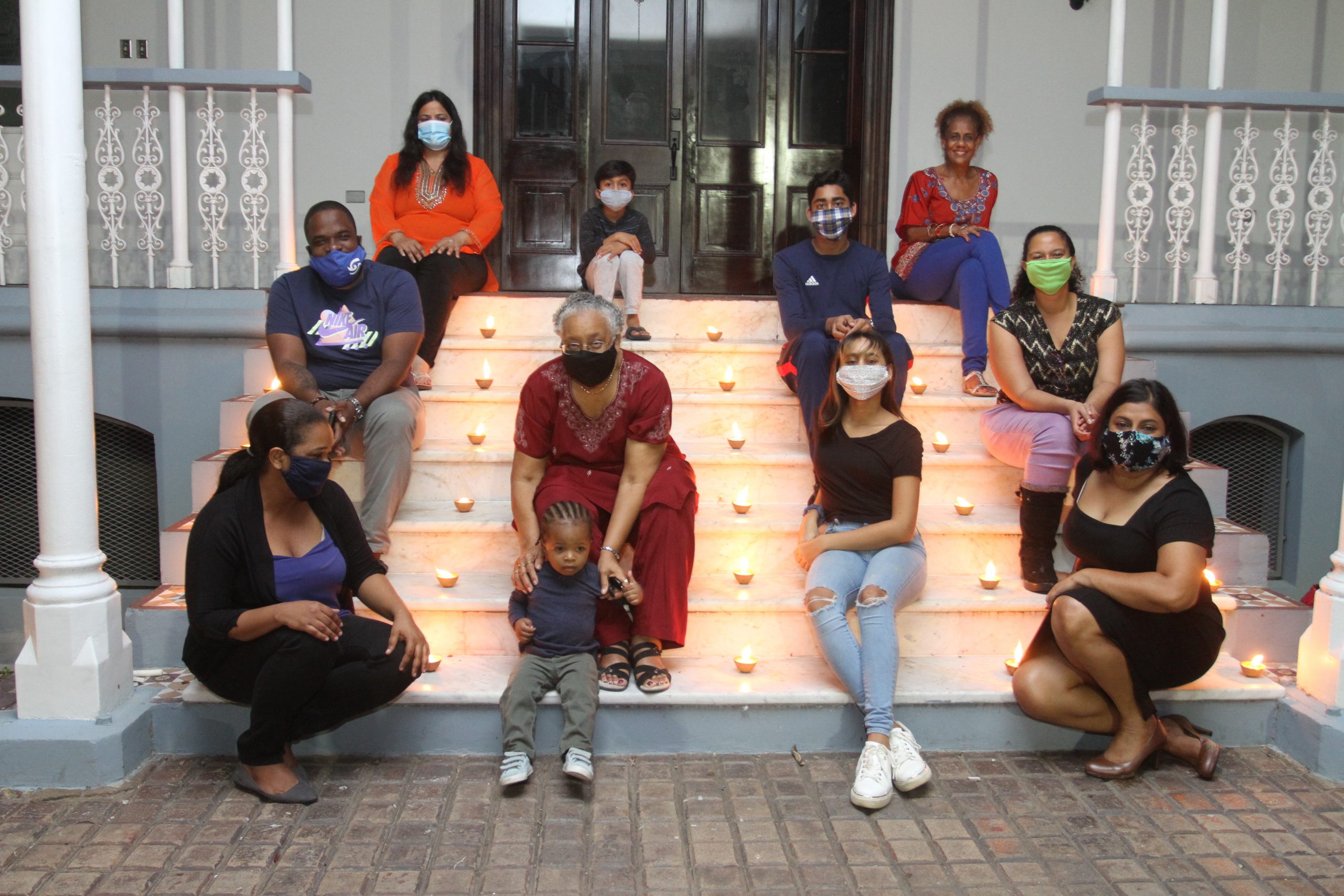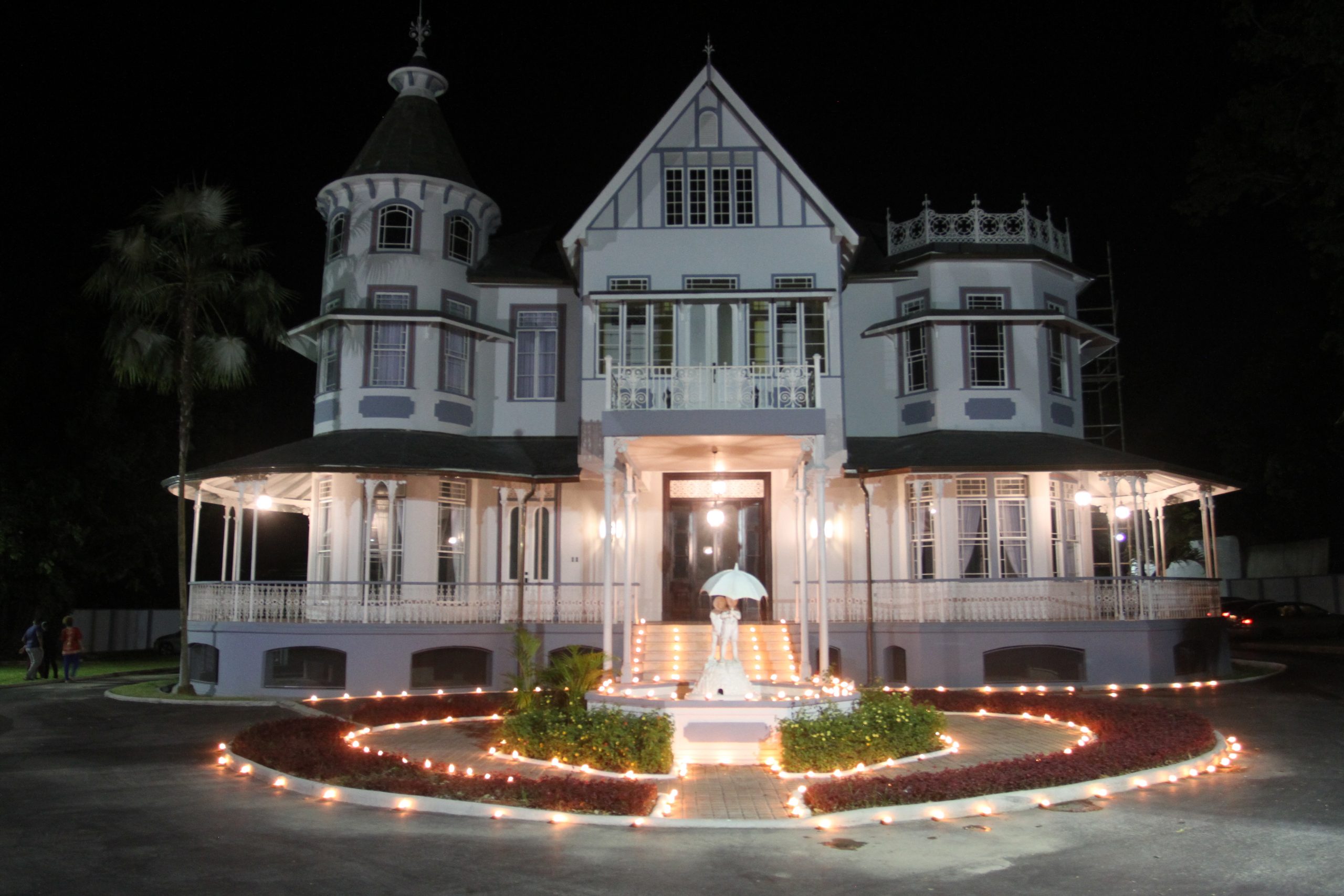By Karishma Nanhu
A traditional deeya is a small handmade clay vessel which is filled with oil, a wick is immersed in the oil and then lit. This simple deeya has religious significance but today the deeya has widespread cultural recognition. Lighting deeyas are a part of Divali celebrations to symbolize the triumph of light over darkness and good over evil.
Every Divali people buy thousands of deeyas, many of which are made in Chase Village and Edingburgh, Chaguanas. Indian Indentured labourers brought their pottery making skills with them to Trinidad and these skills have been passed on via generations. The traditional name for potters is Kohar. Some of the Kohars who learnt pottery making from their parents include Makh Pottery, Radika’s Pottery Shop, Ragoonanan Pottery Shop and Donny’s Pottery Shop.
Divali is the busiest time for them and additional workers are hired to increase production which can take place for twenty-four hours.

Picture of new deeyas at Makh Pottery Shop
Source: Photo by Edison Boodoosingh, Trinidad & Tobago Guardian.

Picture of deeyas being made at Makh Pottery Shop
Deeyas are not the only item made though. Clay kalsas (small vessels) are also made for Hindu rituals. Water jars, urns, flowerpots and goblets are also made. While these may seem like novelty items today clay vessels were utilized in the 19th and 20th centuries by lower and middle class Trinbagonians. Clay vessels were used by indentured Indians for food storage and by wider creole society for water goblets, to keep the drinking water cool.
Deeyas have evolved from the simple clay vessel. Today many people purchase deeyas with wax in them, as opposed to the traditional oil and wick deeyas. Additionally, artists do elaborate designs on deeyas and kalsas. One artist, Aneesa Karim, says that her designs on deeyas tend to be florals, mandalas, and abstract motifs. They reflect no specific symbolisms, except to express happiness, enlightenment and beauty, unless decorated in conjunction with kalsa/kalash pots that are done to worship various Hindu deities (Karim, 2020).

Picture of a decorated deeya resting on a kalsa by henna artist Aneesa Karim
Source: Diosa Body Art and Design, Aneesa Karim


Pictures of decorated deeyas by henna artist Aneesa Karim
Source: Diosa Body Art and Design, Aneesa Karim
As part of the cultural celebration of Divali, deeyas are lit at community and corporate celebrations. Other cultural activities which take place in communities across the nation include ‘bursting’ bamboo and bamboo bending for deeya displays. Like decorative deeyas, bamboo bending has also evolved into elaborate artwork.

Picture showing Bamboo bending art in Diego Martin
Source: TriniView.com
Like all national festivals in Trinidad and Tobago, celebrations usually start from the week prior to the main event. Indo-Trinidadian food and sweets are shared. People participate by wearing Indian clothing and having henna or mehndi done. This is a form of temporary body art which is often done during cultural celebrations. Both men and women can apply mehndi, although it is often associated with feminine beauty. Mehndi is not gender specific, nor is it found in Indian culture alone or has origins in India. In fact, henna is native to Egypt (Karim, 2020).

Picture of henna/ mehindi done by artist Aneesa Karim
Source: Diosa Body Art and Design, Aneesa Karim
There are many ways to celebrate Divali. We invite you to send us your pictures of bamboo bending and Divali celebrations to be featured on our social media. The National Trust of Trinidad and Tobago wishes everyone a safe and Happy Divali.

Source: Leslie-Ann Paul
Socially Distanced Deeya Lighting at Mille Fleurs, the new headquarters of the National Trust of Trinidad and Tobago

Source: Leslie-Ann Paul
How Deeyas are made featuring Makh Tikal
Source: Rajnauth Lal (youtube.com)
Sources:
Arrival of the Ancient Art of Pottery. (2012). Trinidad and Tobago Guardian. https://www.guardian.co.tt/article-6.2.434479.544e1d9064
Divali Celebrations in Diego Martin. (2007). TriniView.com. http://www.triniview.com/diego_martin/121107.html
Karim, Aneesa. Personal Communication. 09/11/2020.
Kong-Soo, Charles. (2019). Making of the Deyas: Divali a busy time for potters moulding clay. Trinidad & Tobago Guardian. https://www.guardian.co.tt/news/making-of-the-deyas-6.2.965566.82a60a9f88
Kong-Soo, Charles. (2019). The Art of Pottery in Good Hands. Trinidad & Tobago Guardian. https://www.guardian.co.tt/life/the-art-of-pottery-in-good-hands-6.2.896102.37b5f01555

